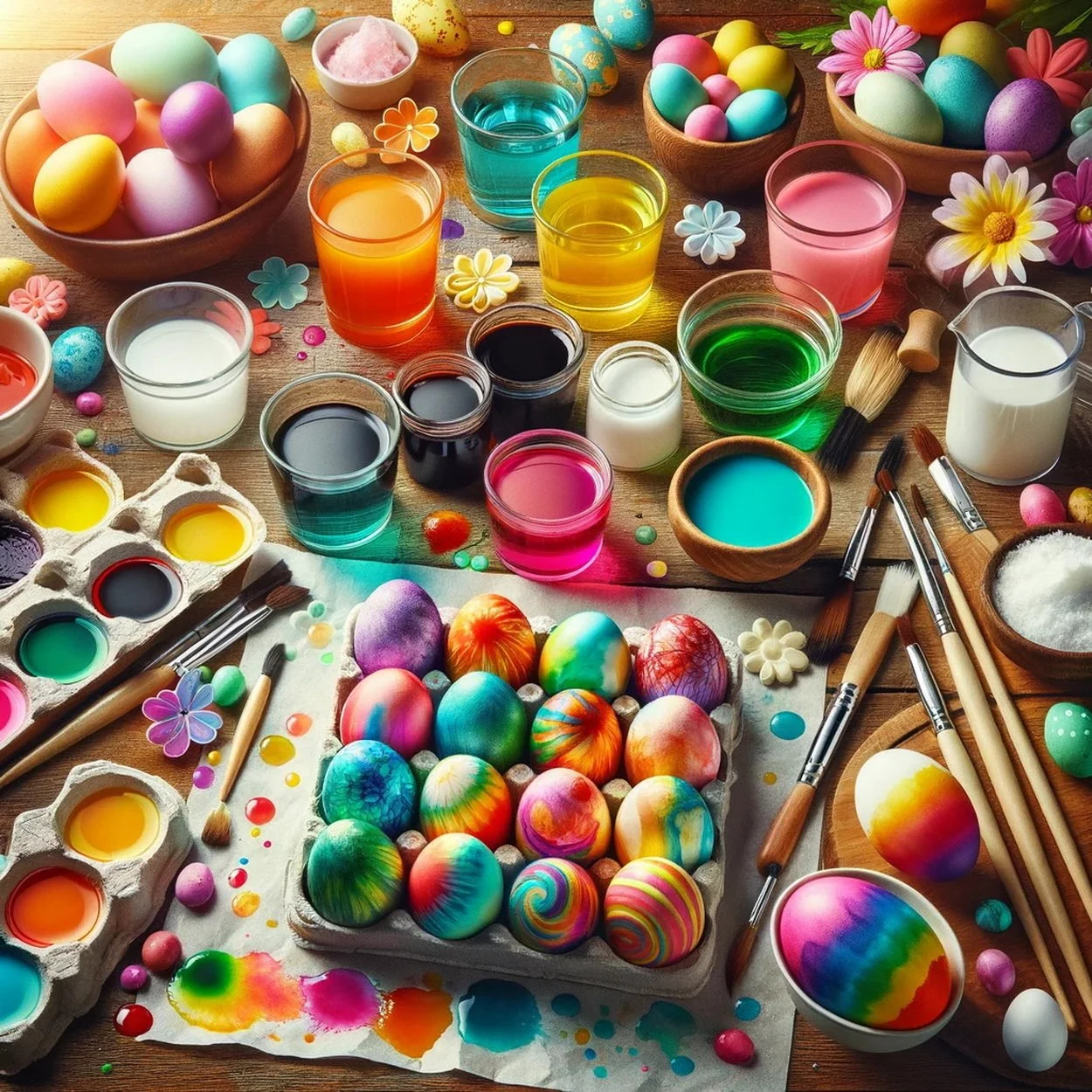Naturally Dyed Blue Easter Eggs: A DIY Guide
Easter is a time of renewal, celebration, and color. Among the most cherished traditions is the art of egg dyeing, a craft that dates back centuries. Today, we're revisiting this timeless practice with a modern twist: using natural ingredients to create stunning blue Easter eggs. This environmentally-friendly method is not only safer for your family but also produces beautiful results that will become the centerpiece of your Easter celebration.
Naturally Dyed Blue Easter Eggs: A DIY Guide
Natural Dyeing: A Safer Alternative
Conventional egg dyes often contain chemicals that many people prefer to avoid. Natural dyeing, on the other hand, uses ingredients found in nature, offering a safer alternative without compromising on color vibrancy. Red cabbage is our star ingredient – it contains a natural pigment called anthocyanin, which changes color based on the pH level of its environment, producing a gorgeous blue hue when used for dyeing eggs.
Ingredients and Materials Needed
Before we begin, let's ensure you have all the necessary ingredients and materials:
1 head of red cabbage
1 dozen hard-boiled eggs
A large pot
Water
White vinegar
A strainer
A large bowl
A slotted spoon
Step-by-Step Guide to Dyeing Easter Eggs Naturally
Preparing the Natural Dye
Chop the Red Cabbage: Start by chopping your red cabbage into large chunks. You don't need to be precise; rough chops will do.
Simmer the Cabbage: Place the cabbage in a large pot and cover it with water. Bring the water to a boil, then reduce the heat and simmer for 30 minutes to extract the color.
Strain and Cool the Dye: After simmering, the water will be a deep purple color. Strain out the cabbage pieces and let the liquid cool. For a more vibrant dye, add a tablespoon of white vinegar.
Dyeing the Eggs
Prep the Eggs: While the dye is cooling, prepare your hard-boiled eggs. Make sure they are clean and free from oils that might resist the dye.
Soak the Eggs: Place the eggs in the bowl of cooled dye. Ensure the eggs are completely submerged.
Wait for the Magic: The longer the eggs soak, the deeper the color they will achieve. For a light blue, 30 minutes might suffice; for a rich royal blue, leave them in for several hours or overnight.
Dry the Eggs: Once you’ve achieved your desired shade of blue, carefully remove the eggs with a slotted spoon and let them dry on a rack or paper towel.
Tips for Perfectly Dyed Blue Easter Eggs
Experiment with Dye Times: The beauty of natural dyeing is the range of shades you can achieve. Experiment with different soaking times to create a palette of blues.
Use Room Temperature Eggs: Eggs at room temperature tend to dye more evenly than cold eggs straight from the refrigerator.
Gloss Them Up: For a shiny finish, rub the dried eggs with a cloth dipped in vegetable oil.
Conclusion
Natural dyeing is a rewarding Easter activity that's both fun and educational. It's a wonderful way to teach children about the science of natural colors and the importance of sustainable practices. These naturally dyed blue Easter eggs will not only look beautiful in your Easter basket but also give you peace of mind knowing they are created with safe, natural ingredients.
As you gather around with loved ones this Easter, take pride in your homemade, naturally dyed Easter eggs. They are a testament to your creativity and commitment to a healthier, more sustainable lifestyle.
Naturally Dyed Blue Easter Eggs: A DIY Guide
Embrace the magic of Easter with our Naturally Dyed Blue Easter Eggs: A DIY Guide. This guide is your ticket to creating stunning blue eggs using natural ingredients, perfect for a festive and eco-friendly Easter celebration. To assist you in this colorful journey, I’ve curated a list of sources, each linked to a keyword, to provide you with comprehensive insights and step-by-step instructions.
Natural Dye: Learn the process of creating natural dyes from The Kitchn.
Red Cabbage: Discover how red cabbage can produce beautiful blue eggs with CasaCaribe’s video.
Blueberries: Explore the use of blueberries for dyeing eggs naturally from Secrets In The Oven.
DIY Guide: Get a variety of natural dye recipes and techniques from Mama on the Homestead.
Easter Eggs: Find out how to dye Easter eggs with blueberries for a natural blue color at Get Green Be Well.
May these sources inspire you to create Easter eggs that are not only visually appealing but also a testament to the beauty of natural ingredients. Happy Easter and happy dyeing!







